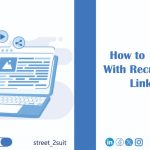Let’s be honest: writing a cover letter is about as exciting as watching paint dry. On a humid day. With a fan turned off. Yet, in the land of job applications, the cover letter is your first impression—a handshake in writing, a wink on paper, a professional flirtation with your future employer.
Done right, it opens doors. Done wrong, it lands in the virtual trash faster than you can say, “Dear Sir/Madam.”
So, how do you write the perfect cover letter? Not just “okay,” not “decent,” but one that makes a hiring manager pause their coffee sip and mutter, “Now, this is interesting.” Let’s dive in.
1. Understand the Mission: It’s Not Your Autobiography
Let’s clear this up from the start: your cover letter is not a memoir. It’s not the time to reflect on your childhood dreams, your sixth-grade science fair victory, or how you once saved a kitten from a tree and thus developed leadership skills. (Though, to be fair, that last one might work—if you’re applying to be a firefighter.)
A cover letter has one mission: to connect the dots between your skills and the employer’s needs. Period.
So skip the fluff and stick to relevance. You’re writing a sales pitch, not an episode of a Netflix drama. And guess who the product is? Yep, it’s you.
2. Address It Like You Mean It
Nothing screams “mass email” like “To Whom It May Concern.” It’s the cover letter equivalent of saying “Hey you” at a dinner party. Lazy. Impersonal. Avoid it.
Take a minute to research the hiring manager’s name. LinkedIn, the company website, or even a polite call to HR can get you that info. If all else fails, “Dear Hiring Team” is still more charming than “Dear Occupant.”
Pro tip: Spelling the name wrong is worse than not using it. Triple check. It’s “Mrs Rahmat,” not “Miss Rahmat.”
3. Start Strong: The First Line Is Everything
Think of your first line as a hook. If it’s boring, the rest won’t matter.
Bad example:
I am writing to apply for the role of…”
Yawn. We all know why you’re writing. Surprise us.
Better example:
“When I discovered your opening for a marketing assistant, I couldn’t resist the chance to blend my love for analytics and coffee-fueled creativity.”
Even better:
I once ran a Twitter campaign that got more engagement than my cousin’s wedding announcement. I think I can do the same for your brand.”
Get their attention. Be human. You’re allowed to be a little witty—as long as it’s in good taste and fits the company culture.
4. Tell Your Story—Briefly
Now that you have their attention, give them the goods.
What have you done?
How does it relate to the job?
Why should they care?
Structure it like this:
One paragraph on what you’re currently doing.
One paragraph on your key achievements.
One paragraph on why you’re excited about them.
Always back up your claims with specifics. “I led a team” is okay. “I led a team of 6 to launch a customer feedback system that increased satisfaction by 20%” is deliciously specific.
And remember: employers care less about what you’ve done and more about what you can do for them. So tailor every sentence to scream: I get what you need—and I can deliver it.
5. Mirror Their Energy (But Don’t Be a Robot)
Your tone should match the company culture. Applying to a law firm? Keep it polished and respectful. Shooting for a startup or creative agency? Show some personality.
That said, even the most traditional companies appreciate a touch of wit if done well. It shows confidence, originality, and that you’re not just copying templates off the internet.
Rule of thumb: Be professional, but not stiff. Warm, but not gushy. Confident, but not arrogant. It’s a fine balance. Kind of like putting just the right amount of chili in your jollof rice—not too bland, not mouth-on-fire.
6. End with Purpose, Not Passivity
Too many cover letters end with something like:
Thank you for your time and consideration.”
Snore.
Try something with a little more oomph:
I’d love the opportunity to bring my experience in customer engagement to your dynamic team. I’m available for an interview at your convenience and look forward to discussing how I can contribute to your growth.”
You can still say “thank you,” but say it like you’re genuinely interested, not just ticking a box.
7. Proofread Like Your Future Depends on It (Because It Might)
One typo can send your cover letter straight to rejection-ville. “Manger” instead of “Manager” isn’t just embarrassing—it’s career sabotage. Read it out loud. Use Grammarly. Bribe a grammar nerd friend with cookies. Just don’t send it unedited.
Also, save it as a PDF before attaching. Unless the job posting asks for a Word doc, PDF is your best bet for preserving formatting.
8. Don’t Just Repeat Your Resume
This one’s important. If your cover letter is just your resume in paragraph form, you’ve wasted your shot.
Instead, expand on a few key experiences. Tell the “why” behind the “what.” Explain how your skills make you the right fit for this role at this company.
If your resume is a list of ingredients, your cover letter is the recipe. Show them how it all comes together.
Conclusion
It’s Not About Perfection—It’s About Connection
The perfect cover letter isn’t necessarily the one with zero mistakes and perfect grammar (though those help). It’s the one that feels like a conversation. The one that says, “Hey, I see your needs—and I’ve got the tools to meet them.” It’s your voice, your personality, and your promise, all wrapped in a page.
So yes, writing a cover letter may never be fun. But it doesn’t have to be torture either. With the right mix of structure, charm, and strategy, you can turn it into a powerful career tool—and maybe even enjoy the process a little.
After all, it’s not every day you get to brag about yourself and call it professional writing.
Receive the latest job and career updates in your inbox, every week!




